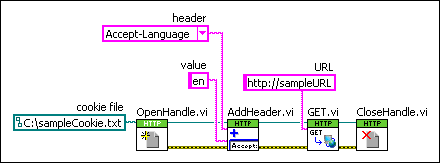AddHeader VI
Owning Palette: Headers VIs
Requires: Base Development System
Adds a header field line to all Web requests associated with the client handle. Headers define attributes of the data exchanged between the client and server.
If you specify a header that already exists, the specified value overwrites the header value. Use RemoveHeader to remove headers.

 Add to the block diagram Add to the block diagram |
 Find on the palette Find on the palette |





